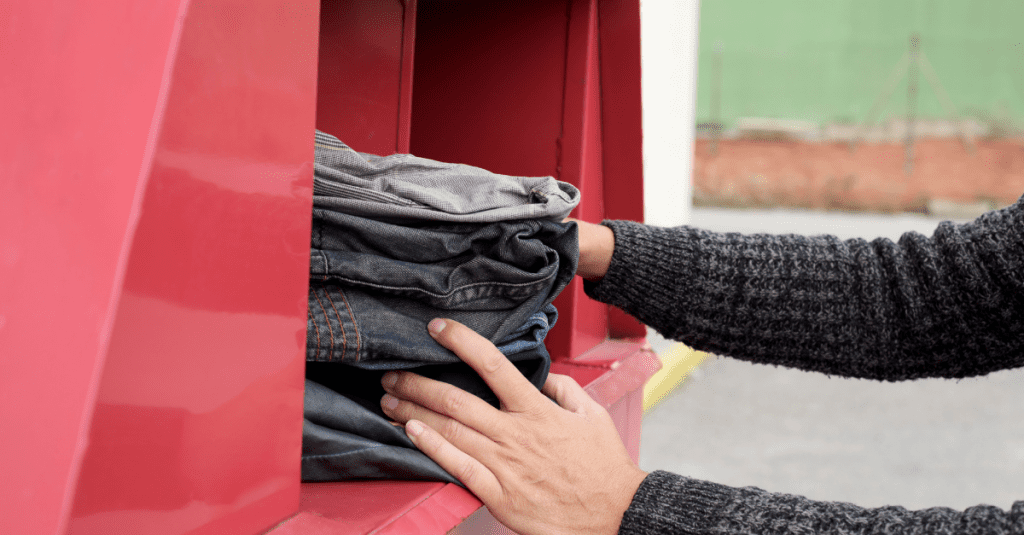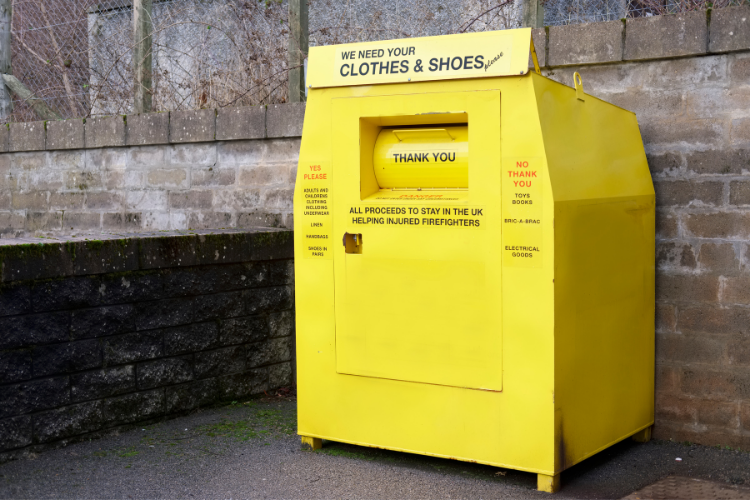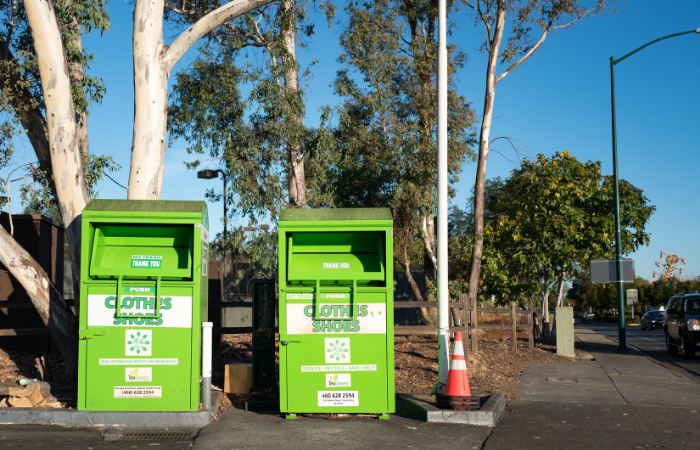Waste crime is on the rise. Increasing numbers of individuals and organized criminals are targeting and stealing from clothing banks. According to the Environmental Services Association in the UK, all kinds of waste-related crime, including clothing bank theft, is costing the nation GBP 1 billion a year.
Clothing banks are often run by charitable and non-profit organizations. They use the funds raised from reselling textiles to drive local and international projects such as community educational programs, employment training, humanitarian aid, or emergency support. Instances of theft from clothing banks mean that clothing intended to fund charitable causes will instead be sold for profit by criminals.
How can you protect your clothing banks against theft and damage? Smart sensor technology is one approach that is proving successful. The small IoT sensors that measure and monitor fill levels in clothing banks provide valuable data that has the potential to protect fundraising efforts and prevent donated goods from being diverted by theft and illegal profiteering.

How Are Clothing Banks Affected by Waste Crime?
Waste crime refers to any illegal waste activity. The term covers activities such as fly-tipping, illegal dumping, uncontrolled burning, fraud, and tax evasion, as well as theft from and damage to clothing banks.
Waste crime against clothing banks can be divided into three categories:
- Theft of Clothing and Textile Materials: Individuals gain access to clothing banks by breaking the locks and replacing them with their own. Sometimes, they climb inside and steal the contents of the container. Criminals are known to use children for this particular task. They are tasked with pushing the most valuable clothing donations out of the bin. This is a dangerous criminal activity and several people have been killed during theft attempts in recent years. They resell the clothing and textile materials for profit. This approach is often referred to as “fishing”.
- Vandalism to Clothing Banks: Individuals damage clothing banks for example by setting them on fire, graffiti, gluing the locks, or filling the container with garbage.
- Theft of Clothing Banks and Fake Clothing Banks: Individuals steal clothing banks, rebrand them under a fake or unregistered charity or organization name, and place them on sites without permission. These banks falsely claim to be linked to charities. People continue donating items to these clothing banks in the belief that their clothing will go towards a good cause.
How Can Smart Sensors Help Stop Waste Crime?
Recovering Stolen Clothing Banks
In the UK alone, it is estimated that there are around 15,000 charity clothing banks. But according to the Textiles Recycling Association, up to 20 of these containers go missing every week. Clothing banks bring in an average of GBP 70 in donations every week. And replacing clothing banks is not a simple fix. The replacement procedure can take up to two months, leaving charities and clothing bank operators severely out of pocket.
Smart sensors can help put a stop to this thievery by providing data on the locations and movements of clothing banks. This empowers clothing bank operators to track their containers from their computer. Thanks to high-accuracy data, you can detect theft and be notified during theft attempts so you can quickly find and recover your misplaced clothing banks.
Smart sensors can additionally provide information on suspicious movements and last recorded locations of missing bins. If your clothing bank is equipped with a smart sensor with asset tracking capabilities, you will receive a detailed overview of the container’s journey to help you identify missing timelines and put a stop to any future incidents of theft.

Learn more about how smart sensors with asset tracking capabilities are preventing waste crime.
Preventing the Theft of Clothing and Textiles
Unwanted textiles are surprisingly valuable. According to the Waste and Resources Action Programme (WRAP), approx. 350,000 metric tons of textile and clothing material goes to landfill sites in a year. If these materials were donated via clothing banks for reuse or recycling, they could generate as much as GBP 140 million in revenue. There is clearly financial incentive for criminals to target clothing banks.
Smart sensors can help you head off waste criminals and ensure donated clothing ends up in the right hands. And it’s all thanks to real-time data. Insights on the fill levels of clothing banks help clothing bank operators keep an eye on bins via a smart waste management platform. This means that you can keep track of when clothing banks are emptied, how fast they fill up, and any suspicious emptying events.
The data provides an extra layer of insights into the behavior of criminals. You can use this in correlation with your own in-house information on collection routes and service frequencies to gain an overview of patterns. And additionally, this data provides unrivalled potential for optimizing collection services, eliminating overflowing containers, and ensuring more textiles can be recycled.
Ward Off Waste Crime Against Your Clothing Banks with Smart Sensors
The increasing instances of theft and vandalism to clothing banks calls for a new approach to waste management and waste crime prevention. Data provided by smart sensors empowers clothing bank operators to take substantial steps against the theft of containers and donated textiles. In particular, sensors with asset tracking capabilities enable operators to keep tabs on the locations and movements of their containers, so they can protect their bins and have all the necessary information to quickly recover missing or stolen bins.
